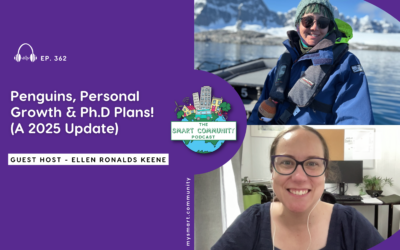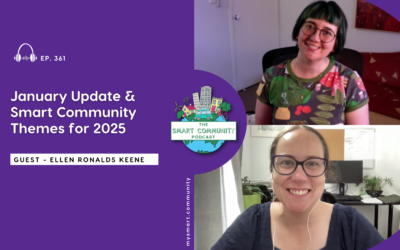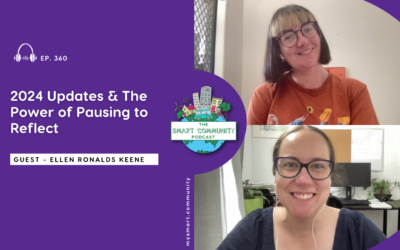Hi #SmartCommunity friends! Welcome to the Summer Series here on the Smart Community Podcast. As you know, we’re taking a little break from new content over the Australian summer holidays, and instead we are sharing the replays of a few of our all time favourite episodes. This week we’re sharing my interview with Samuel Austin from Episode 340, which was published in May 2023.
Sam is an Urban Planner, Community Engagement Specialist and Placemaker, and also the NSW Young Planner of the Year 2022. In this episode, Sam tells us about his background in urban city planning, and his interest and passion for the relationship between people and place. We talk about the role data plays in planning and analysis of how people are using spaces, and Sam tells us about his work on the neon grid and nighttime economy strategy for Sydney.
Sam and I discuss the importance of breaking down barriers and silos within cities and communities to foster an integrated approach for a seamless experience for customers, as well as what the nightime economy and neon grid looks like in semi urban and regional or rural settings. Sam tells us about community engagement projects he’s worked on in Sydney and we finish our chat discussing the emerging trend of live data allowing for appropriate and timely responses to community requirements. As always, we hope you enjoy listening to this episode as much as we enjoyed making it.
What we cover in this episode:
- Sam’s background in urban city planning and community engagement
- His passion for the relationship between people and place
- What a Smart Community is to Sam
- The nighttime economy, and how we can meet the needs of people at nighttime in our cities
- About Sam’s work on the neon grid and nighttime economy strategy for Sydney
- The role data plays in scaling our planning and analysis of how people use spaces
- The importance of breaking down barriers and silos within cities and communities to foster an integrated approach for a seamless experience for customer
- What the neon grid and nighttime economy looks like in semi urban and regional or rural settings
- Some of the community engagement projects Sam has worked on
- How planners can use 3D printers to help community better visualise projects (rather than in 2D)
- The emerging trend of live data allowing for appropriate and timely responses to community requirements
Quotes:
“It’s all about exploring that relationship between people and place. I really want to understand and unpack how we can help grow and manage our cities and towns to really make sure that we’re building places that are catering for us, its people, its users. And that’s really reflected in a lot of the place planning and strategy work I’ve been involved in.”
“For the nighttime economy, we’re looking at things like late night supermarkets, gyms, and how we can meet the needs of a growing sector of employees. Particularly here in Sydney, two of those big areas that are increasing are around logistics and healthcare workers. We’re looking at how people are going to respond to that space and planning for making sure that people who work in the evening do have the same access to services and products and everything else that everyone else does during the daytime.”
“It’s really fantastic. Where we are in planning at the moment, because we are now actually getting access to all these really, really interesting data sources, and allowing us to uncover insights that we just wouldn’t otherwise be able to understand or otherwise identified previously. Using algorithms and open data to pull out business data and points of interest and allowing us to really sort of spatially map a lot of this movement across cities.”
“If we’re scaling up and looking at multiple places at once, we’re looking at that relationship about how people are moving to into this space from another place. So it’s really taking that place based approach and understanding the broader context of why people are coming to the space, what people associate with that space, the identity of a place as well. And that scalability is really the enabler of that investigation.”
“Having access to all this additional data and being able to layer on more and more data insights to that approach really means we can keep continuing to plan for our space in a more holistic approach.”
“As a young planner in this space, I definitely have my thoughts and opinions on how we can challenge the current planning system. And really make sure we are actually creating the space and for people that are embedding our places with community values to.”
Connect:
Connect with Sam on LinkedIn
Connect with me via email: hello@mysmart.community
Connect with My Smart Community via LinkedIn or Twitter and watch on YouTube
Podcast Production by Perk Digital






0 Comments